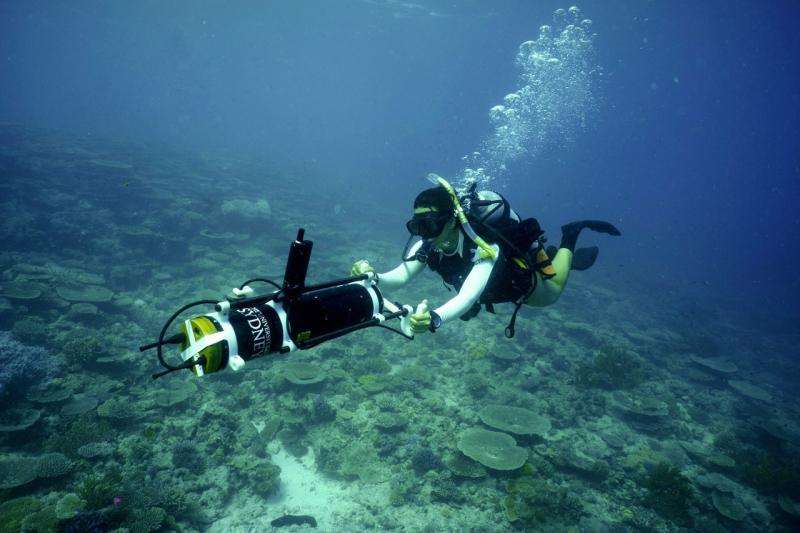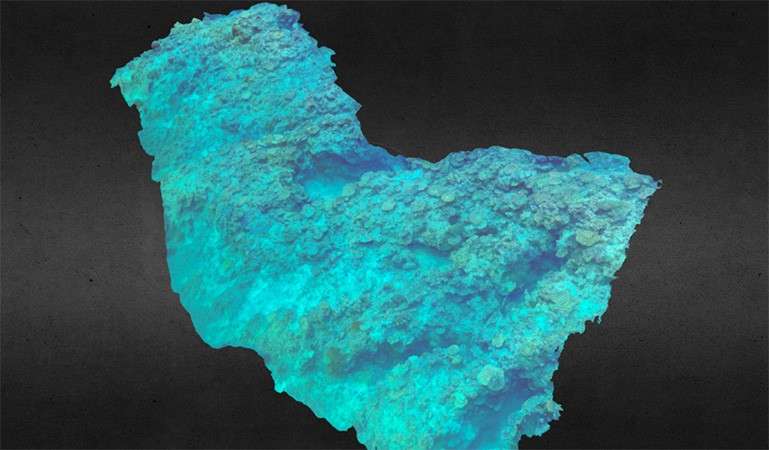Global warming and coral bleaching in the Great Barrier Reef

Researchers are using 3-D mapping techniques to capture the Great Barrier Reef in incredible detail in order to study the effects of global warming and the extent of coral bleaching.
University of Sydney marine biologists Professor Maria Byrne and Associate Professor Will Figueira have recently co-authored a study, published in the influential journal Nature, detailing the devastating impacts of three mass coral bleaching events – in 1998, 2002 and 2016.
They found that last year's event, which also affected reefs in Japan and the Caribbean, was the worst on record, with around two-thirds of coral along a 700km stretch north of Port Douglas lost. Coral bleaching occurs when sea temperature rises and 2016 was the hottest year on record.
"While coral reefs can probably cope with some level of repeat bleaching without disappearing completely, one has to assume these events have to occur at intervals of more like every 20 or 30 years, and certainly not back to back," Associate Professor Figueira said, pointing to evidence that yet another mass bleaching event is occurring this year.
Associate Professor Figueira and his team collected data on the Great Barrier Reef's health from One Tree Island, Lizard Island and Heron Island throughout last year's mass bleaching event.
They also monitored the Solitary Islands Marine Park, an important marine protected area south of the Great Barrier Reef, off the coast of Coffs Harbour in New South Wales.
"I personally was stunned by the eerie vision of reefs with white corals popping out everywhere that we saw when we jumped in for our first field work dive at the Solitaries last year."
"It was much more extensive than I had imagined."
Associate Professor Figueira said the Solitaries are unique in that they are located in a sub-tropical/temperate region, have a very high coral cover and host an amazing combination of temperate and tropical flora and fauna.
"The areas represents a sort of refuge for corals in the face of increasing ocean temperatures into the future," he said.
If southern refugees such as the Solitaries are affected by mass bleaching, the outlook is not good for northern ecosystems on the Great Barrier Reef.

However, Professor Byrne, co-author on the Nature paper, said the southern Barrier Reef, the area around One Tree Island that her team monitored through last year's mass bleaching event, had a "lucky escape" after wind, cloud cover and rain from ex-cyclone Winston kept the waters cool.
"Who would have thought that we would be looking to cyclones to rescue reefs from the worst of the intense warming that accompany El Nino events," she said.
But further north, many areas weren't as lucky. Two-thirds of coral on the northern part of the Great Barrier Reef was lost.
"As devastating as the bleaching and death of coral is, this is only the tip of the iceberg in terms of ecological impacts," Associate Professor Figueira said.
The Great Barrier Reef generates 70,000 jobs and billions of dollars annually in tourism revenue, not to mention the ecological impacts of the loss of an entire ecosystem.
"A reef composed of dead coral begins, very rapidly, to erode away. As it erodes, it loses the structurally complex habitat that is home for all the organisms that live there. Our program uses innovative technology to generate 3-D maps of coral reefs so we can better understand the effects of this loss of complexity on resident organisms."
In fact, the Byrne-Figueira team is hoping to use industrial-sized 3-D printers to turn the mapping information into detailed artificial reefs, where sea creatures can live in areas where dead reefs are collapsing.
However, Associate Professor Figueira said in order to ensure there is a sustainable future for coral reefs and their inhabitants, urgent global action on climate change is needed.
"Reefs everywhere are exposed to multiple pressures which are collectively putting them in harm's way. Some of these stressors, like sedimentation and overfishing of important grazers, we can and indeed have tackled at local levels. But others, like climate change-related increases in water temperature require much broader action," he said.
"One of the key messages of this Nature paper was that when we get ocean warming severe enough to trigger mass bleaching events, the importance of other stressors falls away."
"So the fate of our reefs is linked inexplicable with our ability to rise to the not inconsiderable challenge of reducing global emissions and dealing effectively with our role as drivers of climate change."
More information: Terry P. Hughes et al. Global warming and recurrent mass bleaching of corals, Nature (2017). DOI: 10.1038/nature21707
Journal information: Nature
Provided by University of Sydney




















